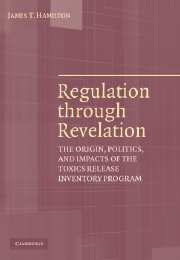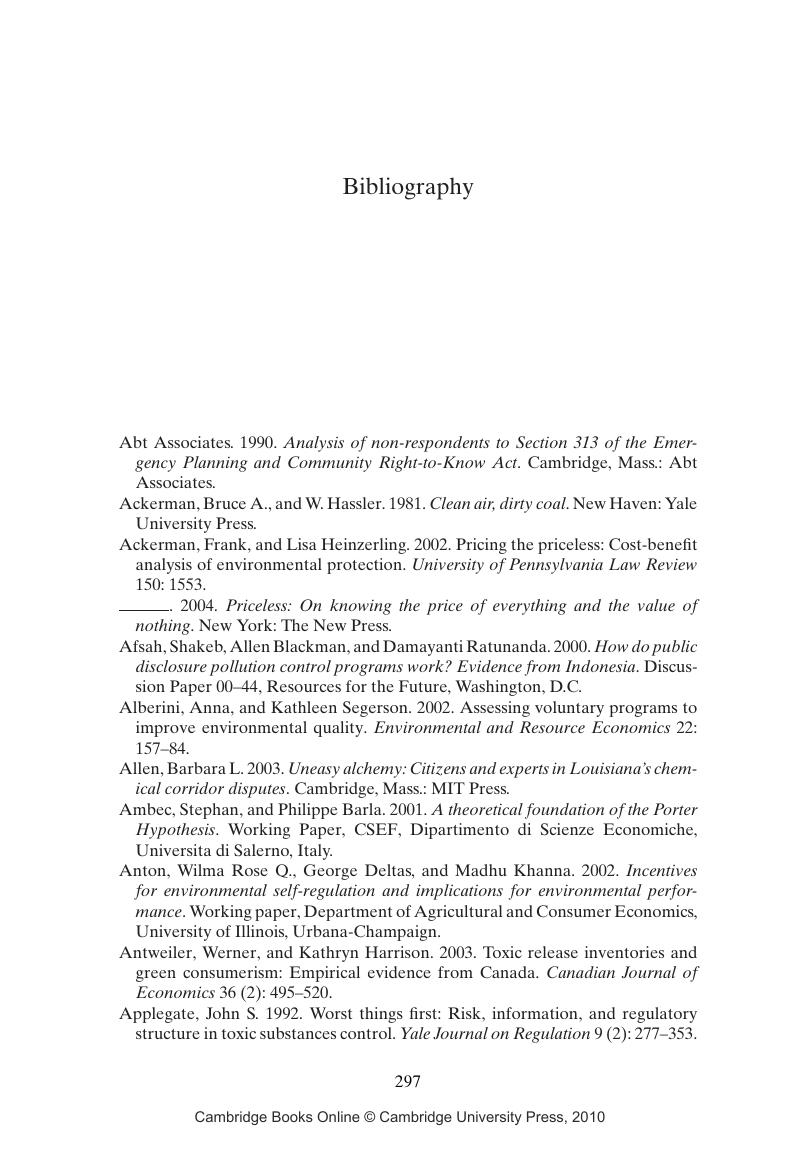 Regulation through Revelation
Regulation through Revelation Book contents
- Frontmatter
- Contents
- Acknowledgments
- Introduction
- 1 Legislating an Incomplete Contract
- 2 Defining Terms: Rulemaking and the Initial TRI Data Release
- 3 Spreading the Word in the Public and Private Sectors
- 4 Politics of Expansion and Contraction
- 5 Life Cycles in the Regulatory Environment
- 6 The Impact(s) of the TRI
- 7 Lessons from and for Regulatory Implementation
- Notes
- Bibliography
- Index
- References
Bibliography
Published online by Cambridge University Press: 24 November 2009
- Frontmatter
- Contents
- Acknowledgments
- Introduction
- 1 Legislating an Incomplete Contract
- 2 Defining Terms: Rulemaking and the Initial TRI Data Release
- 3 Spreading the Word in the Public and Private Sectors
- 4 Politics of Expansion and Contraction
- 5 Life Cycles in the Regulatory Environment
- 6 The Impact(s) of the TRI
- 7 Lessons from and for Regulatory Implementation
- Notes
- Bibliography
- Index
- References
Summary

- Type
- Chapter
- Information
- Regulation through RevelationThe Origin, Politics, and Impacts of the Toxics Release Inventory Program, pp. 297 - 330Publisher: Cambridge University PressPrint publication year: 2005


